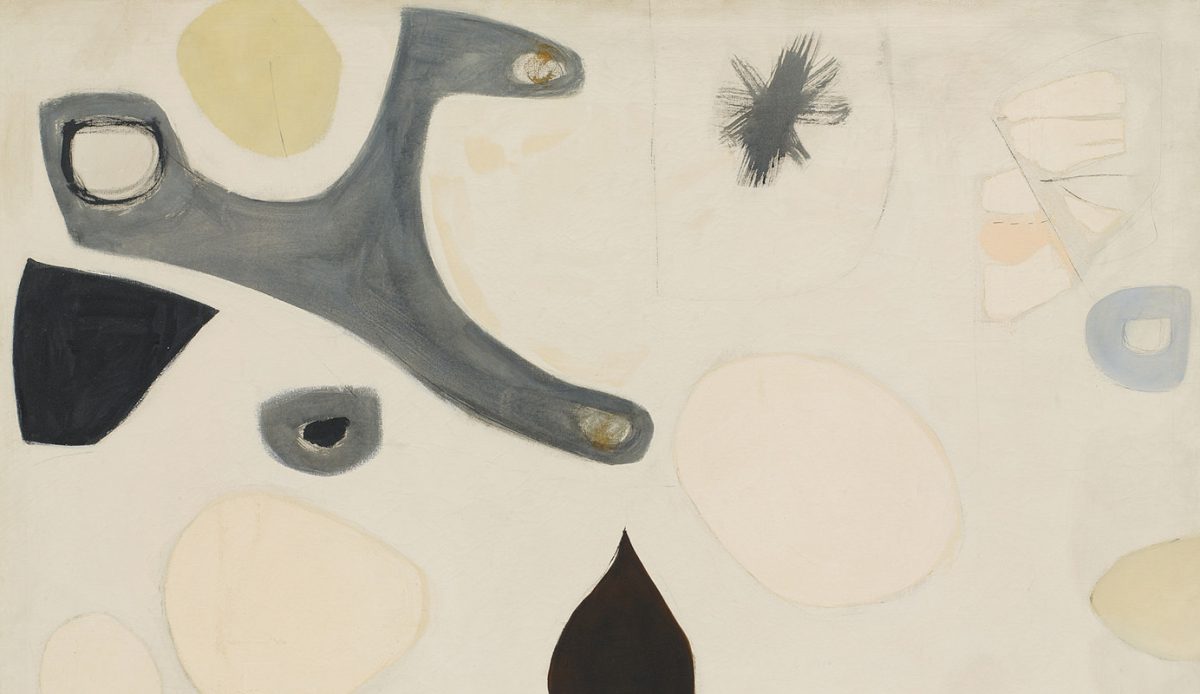OCEANSIDE MUSEUM OF ART
America’s love-hate relationship with modern art came to something of a head in the 1940s and ‘50s, when the middle class finally reached a level of security and could afford to exercise a modicum of intellectual curiosity (a modicum maintained with notable intensity by the broadcast media of the era). Also, we went to war to maintain freedom of expression, and if the guy down the block made peculiar things out of cast iron or the pleasantly dotty pharmacist also liked to paint weird shapes, well, that was their hard-won right (unless they were sending secret signals to Stalin, of course). Those amateur, and not-so-amateur, abstractionists were answering to a mid-century Zeitgeist that invited them to look towards Europe—and, increasingly, New York—for cues as to what the imaginative spirit was capable of inventing. This kind of middlebrow sophistication suffused throughout the US especially after the war, culminating in the cultural explosion of the Kennedy years. In the Abstract examines how it manifested in one rather unlikely place, San Diego.
“Unlikely” because San Diego was a comfortable, conservative navy town, regarded even by “cultureless” Los Angeles as an artistic wasteland. The selection of paintings and sculptures Dave Hampton has assembled in In the Abstract does not try to portray San Diego as anything but a backwater, but it does argue that it was a modernist backwater, capable of harboring, if not quite nurturing, geometricists and surrealists and abstract expressionists, people who could produce credible artworks that fit into the tenor of the times. In seeking to convey the full spectrum of San Diego abstraction, Hampton allows work of lesser (if still acceptable) quality to hang cheek by jowl with better work and, more importantly, work of different styles to cohabit walls. Some of these styles—and in certain cases, even specific artworks—predate the mid-century period; but if we’re looking at not just what was made in this period but what was then available and taken seriously by San Diego artists and art enthusiasts, it makes sense to include at least a few works from as far back as the 1920s.
There are many individual delights and even surprises here, work of startling presence that make one curious about their makers: the glossy, jazzy sculpture Sarah Ward’s Noisy Car, a 1965 concoction by Russell Baldwin, for instance, indicates a deep understanding of LA’s finish/fetish movement and equally of Bay Area funk—at the time of their emergence. The sensitive post-cubist paintings of Fred Hocks, Tova Radakovich’s curious bronzes sprouting limbs from cavities, and Lynn Fayman’s intricate photographic experiments also attract, and reward, prolonged attention. Similarly intriguing is the presence of certain names familiar to art (and design) historians—Harry Bertoia, Ed Garman, Guy Williams—but in the context of other places, not southernmost California. The very few usual suspects are aboard (John Baldessari with a very small canvas, Richard Allen Morris with a notably early work). (One surprising omission: Robin Bright. Perhaps he wasn’t abstract back then?) It’s of note that, while the gestural works predominate in number here, they don’t dominate the show, crowded as it is, but balance nicely with the more hard-edge painting and sculpture. In the Abstract is less a lesson in history than it is a visit to it, a peek at (or, if you would, a wallow in) the art that hung in neighbors’ homes and got reproduced in local design magazines at a crucial moment in American cultural history.
For more information, please visit http://oma-online.org











